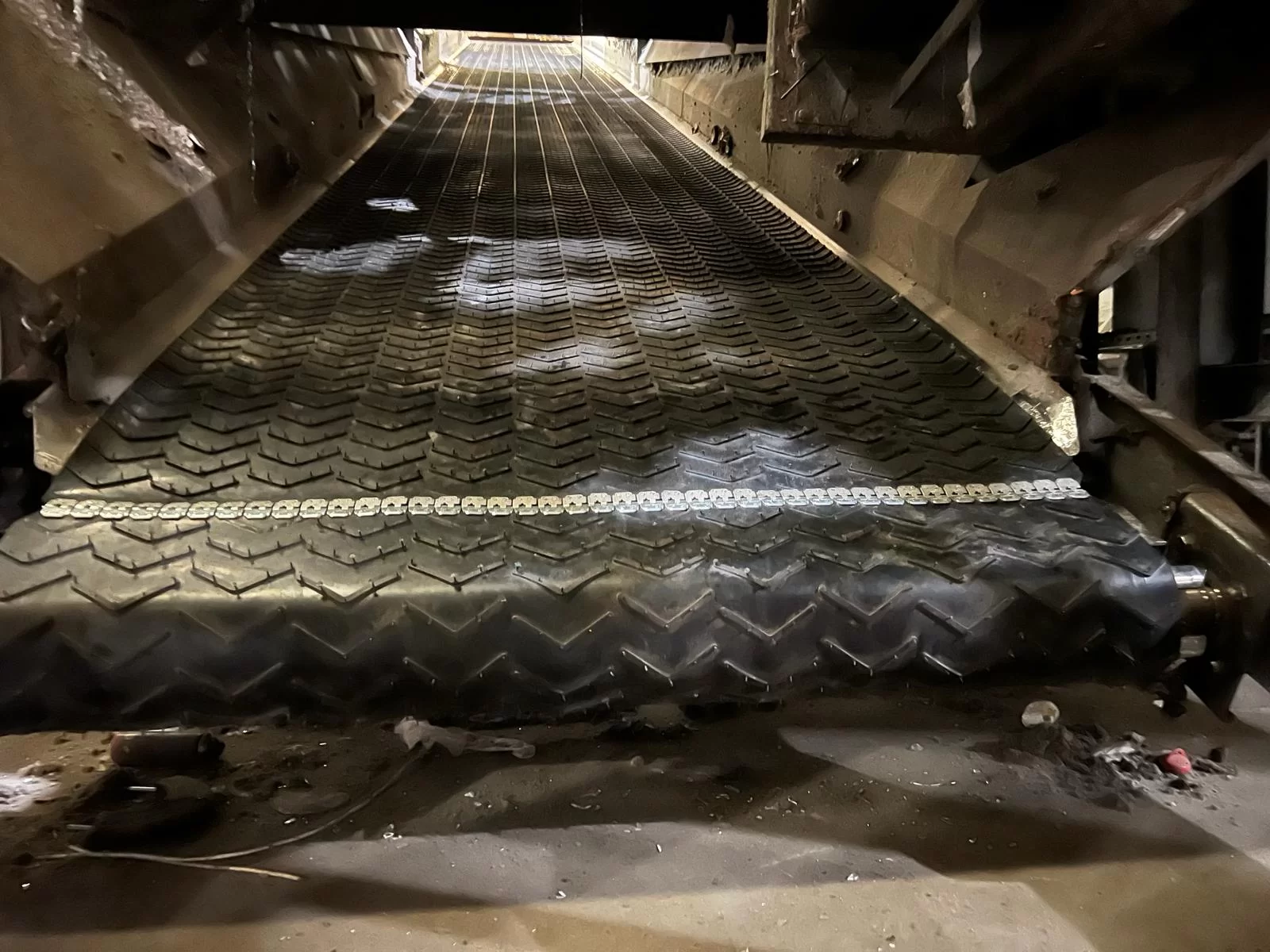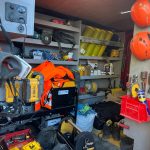What is Vulcanising?
Vulcanising is a process used in the manufacturing and maintenance of conveyor belts to bond and strengthen the various components of a conveyor belt. Conveyor belts are typically made of multiple layers of rubber and fabric materials, and vulcanising services is the process of chemically bonding these layers to create a strong and durable conveyor belt.
Overview of vulcanising services:
Preparation: The damaged or new conveyor belt is prepared for vulcanisation. This includes cleaning and inspecting the belt to ensure no contaminants or irregularities could affect the bonding process.
Splicing: A damaged section of the conveyor belt may need to be cut out, and the remaining ends are prepared for splicing. In the case of a new belt, the ends are also prepared for splicing.
Application of Vulcanising Agent: A vulcanising agent or solution, typically made of a combination of chemicals, is applied to the prepared belt ends. This solution helps facilitate the chemical bonding of the rubber layers during the vulcanisation process.
Pressing and Heating: The prepared belt ends are joined, and pressure is applied using a specialised vulcanising press. Additionally, heat is applied to the splice area using heating platens or a vulcanising machine. The combination of pressure and heat activates the vulcanising agent, causing the rubber layers to chemically bond and cure.
Cooling: After vulcanisation, the spliced area can cool down gradually. This cooling phase is essential to maintain the splice’s strength and integrity.
Trimming and Testing: Any excess material is trimmed from the spliced area, and the quality of the splice is inspected. This may involve various tests, including visual inspections, tensile strength tests, and thickness measurements, to ensure the spliced section meets the required standards.
Vulcanising is critical for maintaining the reliability and longevity of conveyor belts used in industries like mining, manufacturing, agriculture, and logistics. It helps prevent belt separation, reduces the risk of downtime, and ensures that the conveyor system operates safely and efficiently. Adequately vulcanised conveyor belts can withstand stress, tension, and abrasion during their operational lifespan.



Vulcanising Services 24/7
Hoverdale provides a 24/7 National Coverage Service for all your conveyor belting needs.
This includes the supply, fit, and vulcanising of conveyor belts using various jointing techniques.
Conveyor Belt Vulcanising Services Include:
- Hot Vulcanised
- Cold Vulcanised
- Mechanical Clipped
- Superscrewed
Get to the root cause of belt failure.
Hoverdale is different from our competitors. We want you to know why your belt has failed or worn prematurely and investigate the root cause.
When our engineers arrive, they will ensure your plant is running as quickly as possible; however, at the same time, documentation findings and potential improvements will be discussed with the client. We offer complete services: removing guards, removing old belts, and inspecting the conveyor and equipment before pulling on the new belt.
Once the belt is joined, we conduct a run-up test and track the belt, ensuring the asset is in optimal condition for sign-off and handover back to the plant. Our 2-man teams are fully self-supported with company vehicles, including all the required equipment. Presses, generators, compressors, inverters, tooling, PPE, and safety equipment.

Different types of conveyor belt vulcanising
Hot Vulcanising
Hot vulcanising is a method of splicing or repairing conveyor belts and other rubber components using heat and pressure to create a strong and durable bond. This process is often used in industries where conveyor belts are essential for material handling, such as recycling, mining, bulk material handling, construction, and manufacturing.
Hot vulcanising is preferred for applications where maximum splice strength and durability are essential. It results in a seamless, strong, and long-lasting bond that can withstand the stresses and strains encountered in conveyor belt operations. At the same time, hot vulcanising can be more time-consuming and specialised than cold vulcanising or mechanical fastening methods. However, it is often the preferred choice for critical conveyor belt splices in heavy-duty applications.

Cold Vulcanising
Cold vulcanising is a method of splicing or repairing conveyor belts and other rubber components without heat. Unlike hot vulcanising, which relies on heat and pressure to create a chemical bond between rubber surfaces, cold vulcanising uses a specialised adhesive or bonding agent that cures at room temperature. This method is often used when heat cannot be applied due to operational constraints or when a quick, on-site repair is necessary.
Cold vulcanising is a convenient and practical method for conveyor belt splicing and repair when hot vulcanising is not feasible or when a quick, on-site solution is needed. It is commonly used for minor repairs and splicing in conveyor belts, belt pulley lagging, and other rubber-to-rubber bonding applications. While cold vulcanising may not provide the same strength and durability as hot vulcanising, it is suitable for many less demanding applications.

Mechanically Clipped Joint
Mechanically clipped vulcanising is a method of joining or repairing conveyor belts using mechanical fasteners or clips, as opposed to the chemical bonding processes used in hot vulcanising and cold vulcanising methods. This method is sometimes referred to as “mechanical splicing.” It is a convenient and efficient way to connect conveyor belt ends or repair damaged sections without needing heat or specialised adhesives.
Mechanically clipped vulcanising is preferred when quick and easy belt splicing or repair is needed and where the application doesn’t require the same strength and durability as hot vulcanising. It is commonly used for lightweight and medium-duty conveyor belts, where the mechanical fasteners provide sufficient strength and longevity.
One of the advantages of this method is that it doesn’t require heat or specialised adhesives, making it suitable for on-site repairs and situations where heat application is not practical.

Super Screw Joint
Super Screw joint vulcanising is a specialised method of conveyor belt splicing that uses a mechanical fastener known as the “Super Screw” to join the ends of a conveyor belt. This method combines mechanical fastening and vulcanisation elements to create a strong and durable belt splice. Super Screw joints are commonly used in applications where belt flexibility, ease of installation, and a reliable connection are required.
This method is commonly used in mining, quarrying, and bulk material handling industries, where conveyor belts are subjected to heavy loads and abrasion. However, it’s essential to follow manufacturer guidelines and recommendations when using Super Screw joints to ensure a successful and long-lasting splice.

In addition to conveyor belt replacements, we also cover:
- Drum re-lagging/rubber or ceramic.
- New conveyor pulleys and drums
- Rubber sheet and profiles
- Skirtings
- Belt winding machine hire with engineer
- Rollers and idlers
Our training and accreditation include:
- ISO9001 Accredited
- Avetta Accredited
- Safe Contractor Accreditation
- MHEA member
- SHAPA member
- WRA member
- Made in Britain
All Hoverdale engineers are trained and competent with:
- Various NVQs in multiple disciplines
- Safety passports
- Working at height
- Confined space
- Hot works
- Using abrasive wheels
- IPAF
- Lifting and slinging
- First aid
- Forklift
- Manual handling
- LOTOTO
- Mute
Can We Help?
Our products are used in 5 continents and our expertise spans the globe.
Book a site visit now! The savings will more than pay for your time or your money back.







